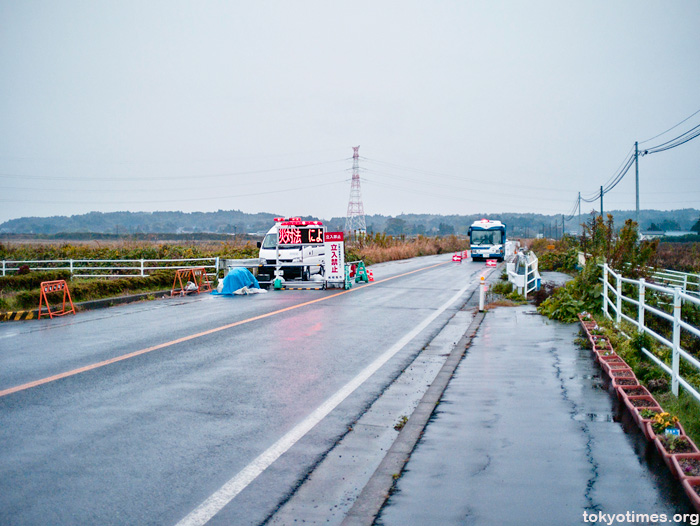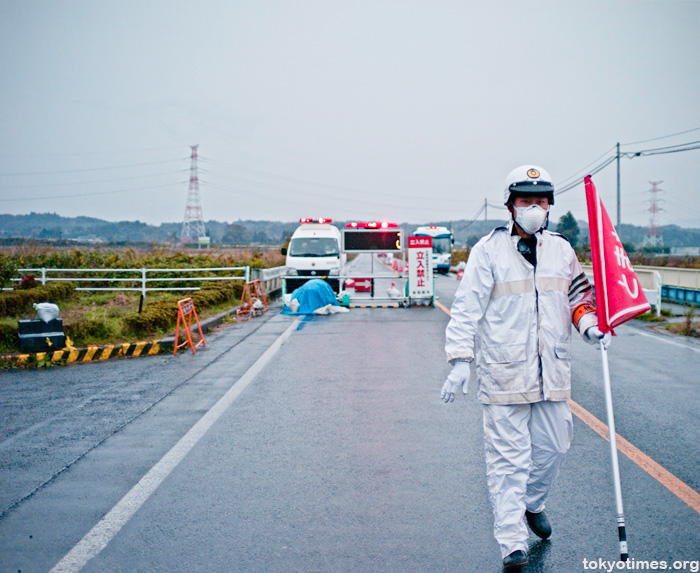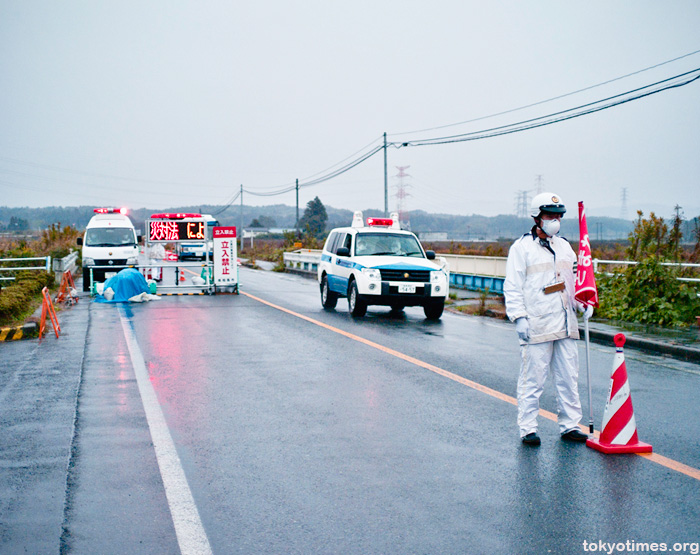The tsunami of March 11 that destroyed lives, property and whole communities obviously got a huge amount of media coverage. In fact including all the amateur footage, it must be the most photographed and filmed natural disaster the world has ever seen.
What then happened at the Fukushima Daiichi nuclear power plant, however, quickly usurped the horrors of the tsunami in the eyes of the press — as do its on-going and related issues. Yet that’s despite things being far from normal in many of Tohoku’s devastated towns and cities, as what remains is still a problem of enormous proportions; a mere fraction of which is clearly visible in these photographs taken a full eight months after the earthquake hit the region.
This unbalanced view quite understandably upsets many people, and as communities try to somehow rebuild, the last thing they need is to be forgotten — or possibly even worse, ignored. But at the same time, forgetting about the dangers of radiation exposure is clearly not an option for those living near the exclusion zone either.
Just like the situation further north, this latter issue is impossible to fully grasp from the safety of Tokyo. Reading about it and debating which region’s vegetables to buy is one thing, but living with the very real fear of what the future may bring is something else altogether. So to get at least some sense of what it’s like, the only option is to travel to the region and get as close as is feasibly possible to the problem: one of the exclusion zone checkpoints.
Driving down a busy road towards Minami Soma with shops and the like on either side is initially very deceptive. Slowly but surely, however, shutters begin to appear on a lot of the buildings, and one by one the cars turn off. Then, in the middle of a deserted road, the checkpoint finally appears — the sight of which is difficult to describe, but it’s somehow like reaching the end of the world. Basically the end of the road in more ways than one.

And the surreal nature of the place is only added to by a semi-lit but strangely still open convenience store very close by. One, needless to say, without any customers, and staffed by a solitary, as well as understandably dejected-looking, shop assistant.
Yet like many roadblocks in Japan, the checkpoint itself is reassuringly manned by a flag waving individual who is very keen on letting travellers know where they may go, and more importantly in this case, where they may not. That said, it is hard to ignore the fact that masks are actually part of the uniform. Plus they are designed to protect those wearing them from something far more malignant than pollen.

The sight of that very same man waving through a reasonably steady stream of vehicles containing people covered head to toe in white protective clothing, on the other hand, made everything feel much more real. And at the same time, utterly unreal.

Meow • Japan & Urbex says
Did you have a geiger counter with you by the way?
Lee says
No. It would certainly have been interesting to see what the readings were, but I didn’t have access to one unfortunately.
James says
Surreal!
Lee says
It was. Very.
willy says
Its so sad. Many of our friends and cousins around Kawamata were we lived for years had to shut up shop, or say goodbye to the farm…and leave. Families with kids are moving away. It was difficult to see some of them again (in various locations in Japan ) when we visited a month ago. They are not their usual chirpy selves to say the least. If you live in the same place all your life and then get uprooted like that .. with all that fear and uncertainty.. . it’s certainly a tough call.
Thanks for the pics Lee.
Lee says
Not at all Willy.
Yeah, it must be horribly tough for so many families. Being uprooted from home is bad enough, but then there’s the added worries about what the future may hold. Seeing the checkpoint really brought it home to me. As did the sight of kids heading home after school a little outside the exclusion zone.
Sucharewicz says
Hello! I’m interested in Japan, from early days of my childhood, and i’m a big fan of news, that you write here. This is the sadest story so far. Tsunami for people who live far, far away from Japan is something that just happens, it dosen’t affect them personaly. But when media shows that radiation level rises, everybody is panicking. They saying about second Czarnobyl, people like to fear. This is how media really works. Normal people who lost everything dosen’t get attention. The great Japan nation is a very strong nation and i hope that everyting would turn back to normal.
Greetings from Poland – Lublin! Cheers!
Lee says
Hopefully things will return to normal, but sadly it’s going to take an awfully long time to do so…
Jeffrey says
I’m still heartbroken about all this. While I don’t believe most of these coastal towns should be rebuilt as they were (as it will only happen again in the next 25-100 years), because the central government is so completely dysfunctional any more I fear that these towns won’t even be fully cleaned up. I can’t believe, for example, that after this much time that the wrecked buses, autos and trucks haven’t all been sorted for insurance/ownership and sent of to scrappers. This happened over a wide swath of the coast, but none of the cities, save for Sendai, was/is all that large.
Lee says
Yeah, it’s a horrid situation whichever way you look at it. Even when they are cleaned up, like you say, is it really safe to rebuild? Then there’s the aspect of the aging population. Especially so in rural and coastal areas. Are there actually going to be people to live in the towns even if they are rebuilt?
As for the cars, pretty much all of them had numbers sprayed on me, so presumably they have been identified, and insurance has either been paid out or is in the process of being. Not of course that that explains why they are still there. Perhaps because of the sheer number of them?